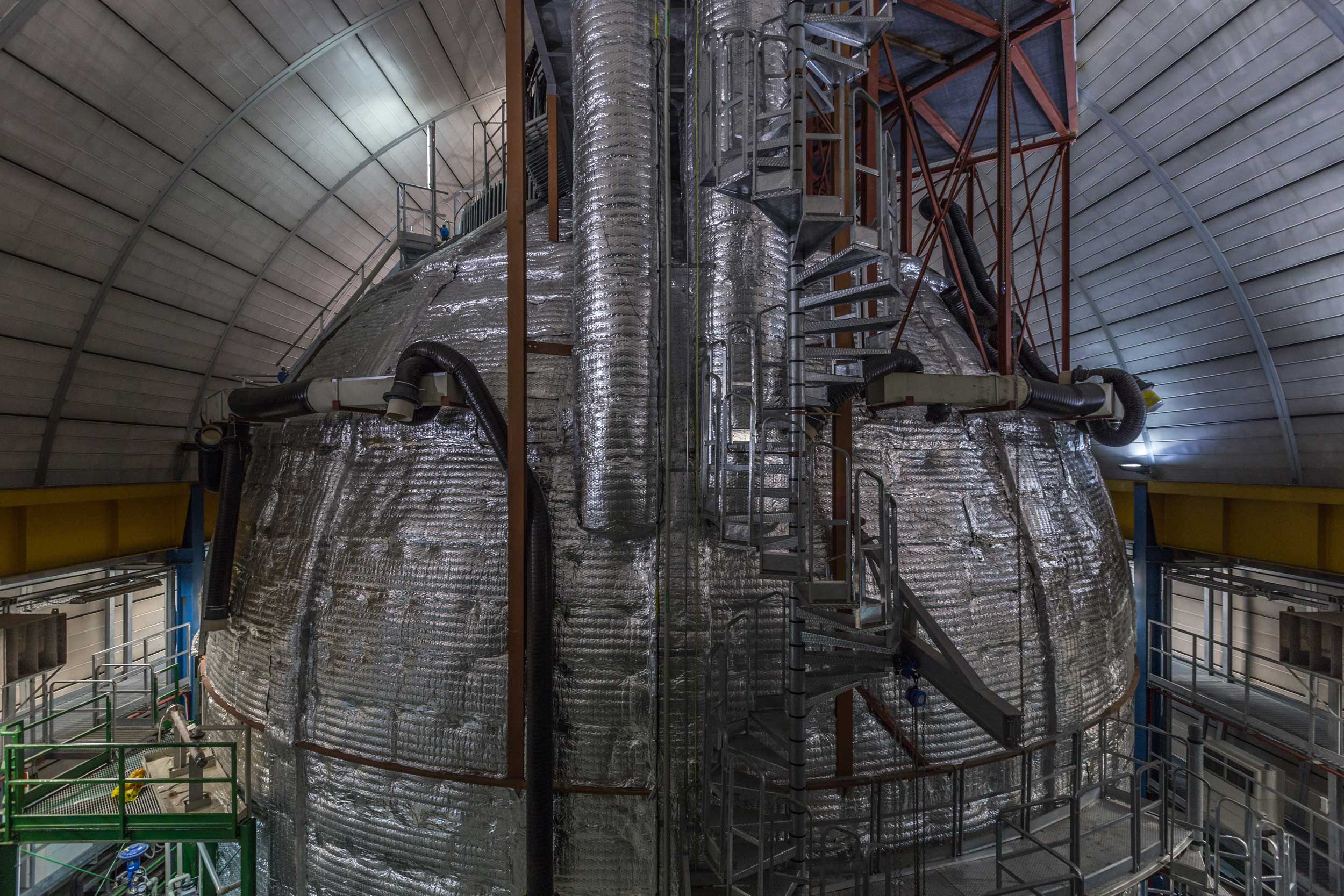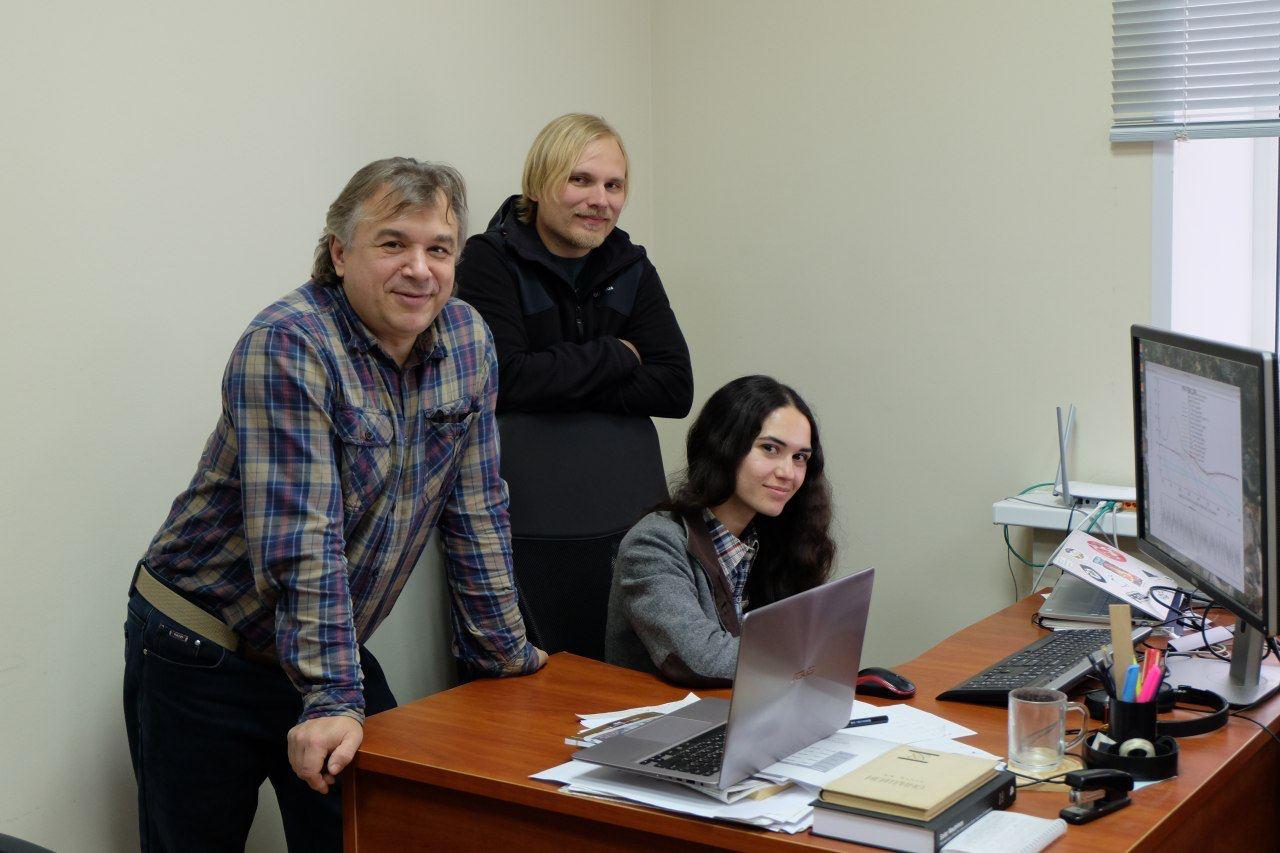Neutrino geophysics in DLNP
News, 26 October 2020
Neutrino geophysics has formed as a separate discipline only recently. This fast-developing scientific field at the boundary of geology, geophysics and particle physics studies the inner structure of the Earth by observing antineutrino fluxes accompanying the decay of radioactive elements in the crust and mantle of the Earth. The contribution of radioactive decays to the total heat release of the Earth (radiogenic heat) defines the Earth’s thermal history and limits geophysical models of the Earth.
 Borexino detector in Gran Sasso National Laboratory
Borexino detector in Gran Sasso National Laboratory
The first reliable confirmation of a non-zero geoneutrino flux was published in 2010 by the Borexino collaboration. To study in detail the effect of radioactive elements on the warming of the Earth, measurements at several detectors like Borexino that are located in various parts of the world are necessary. The technique developed at Borexino has already given life to new dozen-kilotons projects aimed also at the measurement of a geoneutrino flex. A bright example of it is the JUNO experiment in China. DLNP scientists take an active part in the preparation of it.
The Dubna group initiated antineutrino research at the Borexino detector. First assessment of the detector’s sensitivity to geoneutrino was carried out in 2005-2006 at the Borexino prototype (CTF). Scientists developed criteria of the selection of antineutrino events. The group took part in acquiring early results on the registration of low-energy antineutrino, including two first scientific papers on geoneutrino.
The dataset collected at Borexino during 3,263 days between December 2007 and April 2019 was used for new, more precise, measurements of the geoneutrino flux. Only 53 geoneutrino events from decays of uranium and thorium have been registered for these almost 12 years with the measurement accuracy of 18 %.
Nowadays, efforts of physicists are focused on defining the contribution of the signal from the mantle to the full geoneutrino flux. The presence of a signal from the mantle is confirmed by the data from the Borexino experiment. The measured geoneutrino signal corresponds to the heat release in the Earth’s interior of 38 TW, while the mantle’s contribution is about 25 TW. These values are well combined with various geophysical models demonstrating only statistically weak deviation from models with lower concentrations of radioactive elements in the mantle. In addition, the existence of hypothetical geo-reactor in the centre of the Earth with a power higher than 2,4 TW is excluded.
The Dubna scientists took part in the data analysis as members of the antineutrino group headed by L. Ludkhova. The background from neutron-releasing reactions was modelled and measured. The results of and prospects for experimental studies of geoneutrinos are presented in the review by Head of the Dubna group Oleg Smirnov.
Search results for neutrinos from CNO cycle
In addition to working with the data from the Borexino detector, members of the group are actively engaged in evoking interest in the new scientific field by presenting reports on geoneutrino results of Borexino and on neutrino geophysics at seminars, schools and international conferences. The results have been presented at DLNP seminars, in Gran Sasso National Laboratory, in the University of Milan, the Belarusian State University, Comenius University (Bratislava), INR RAS in Tritsk, as well as at international conferences.
The group of scientists from the Laboratory of Nuclear Problems engaged in Borexino experiment (Oleg Smirnov, Alina Vishneva and Maxim Gromov) won the DLNP competition of scientific papers in the nomination “Physics” for the series of scientific papers “Neutrino geophysics”.
 In the photo from left to right: Oleg Smirnov, Maxim Gromov, Alina Vishneva
In the photo from left to right: Oleg Smirnov, Maxim Gromov, Alina Vishneva
Series of scientific papers
[1] M. Agostini, et al. (The Borexino collaboration), “Spectroscopy of geo-neutrinos from 2056 days of Borexino data”, Phys. Rev. D 92, 031101, 2015. Paper highlighted in the Editor’s Suggestion on the PRD website.
2] O. Smirnov, ” The physics of geoneutrino and their detection”, in Geoneutrinos by Open Academic Press, 2016, ISBN 978-83-944520-1-8. (Chapter in the collective monograph).
[3] M. Agostini et al. (The Borexino collaboration), “Comprehensive geoneutrino analysis with Borexino”, Phys. Rev. D 101, 012009 (2020).
[4] O. Smirnov, “Experimental aspects of geoneutrino detection: Status and perspectives”, Progress in Particle and Nuclear Physics, v. 109, 2019, 103712
Source: DLNP